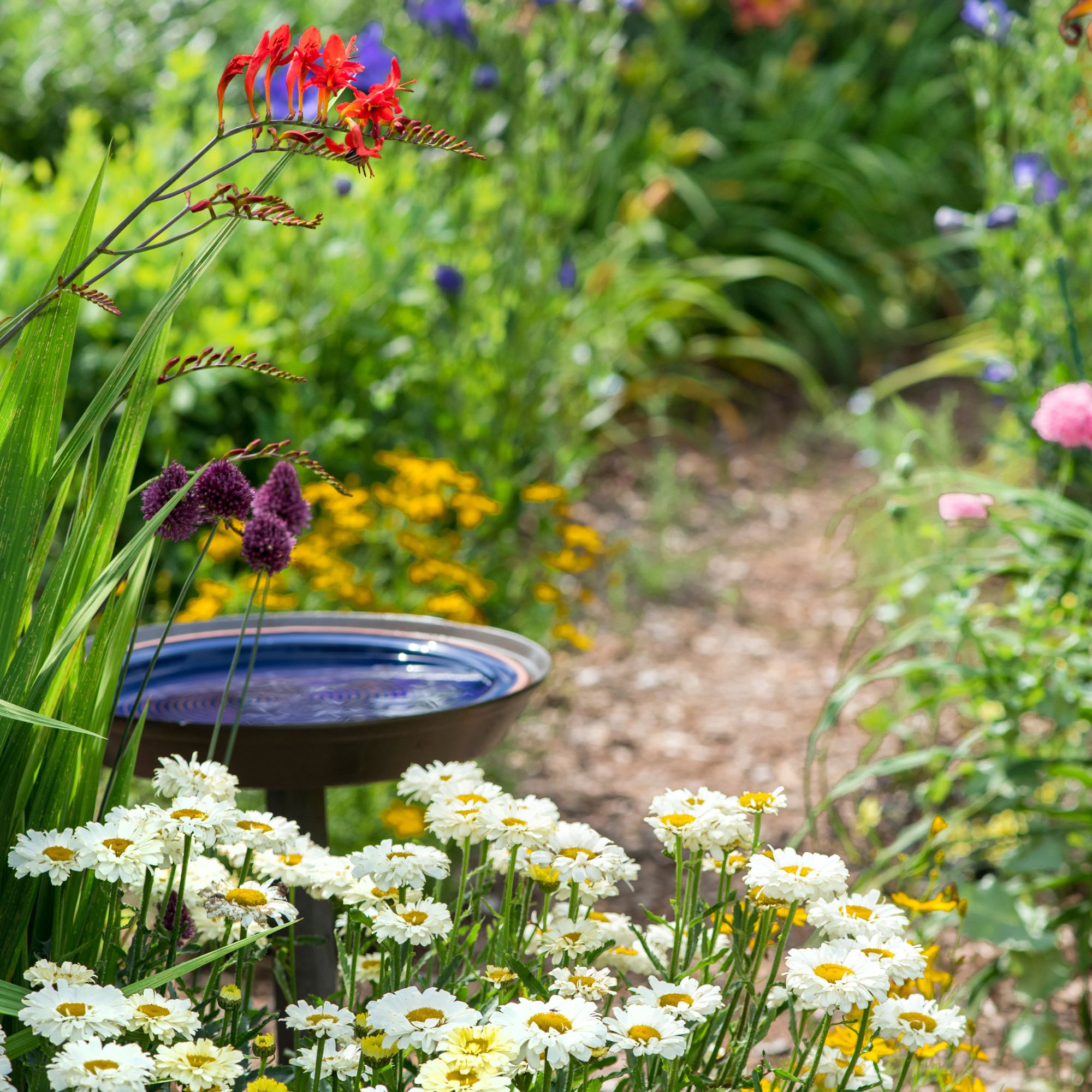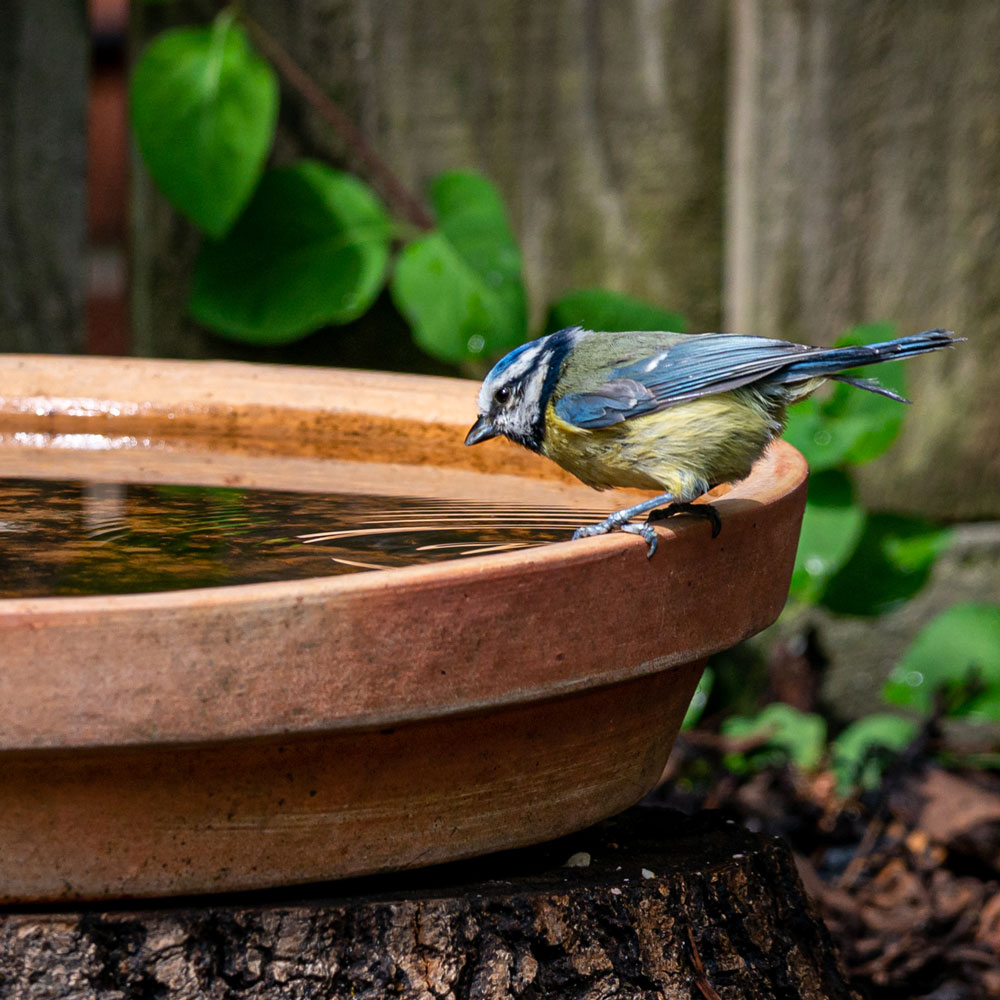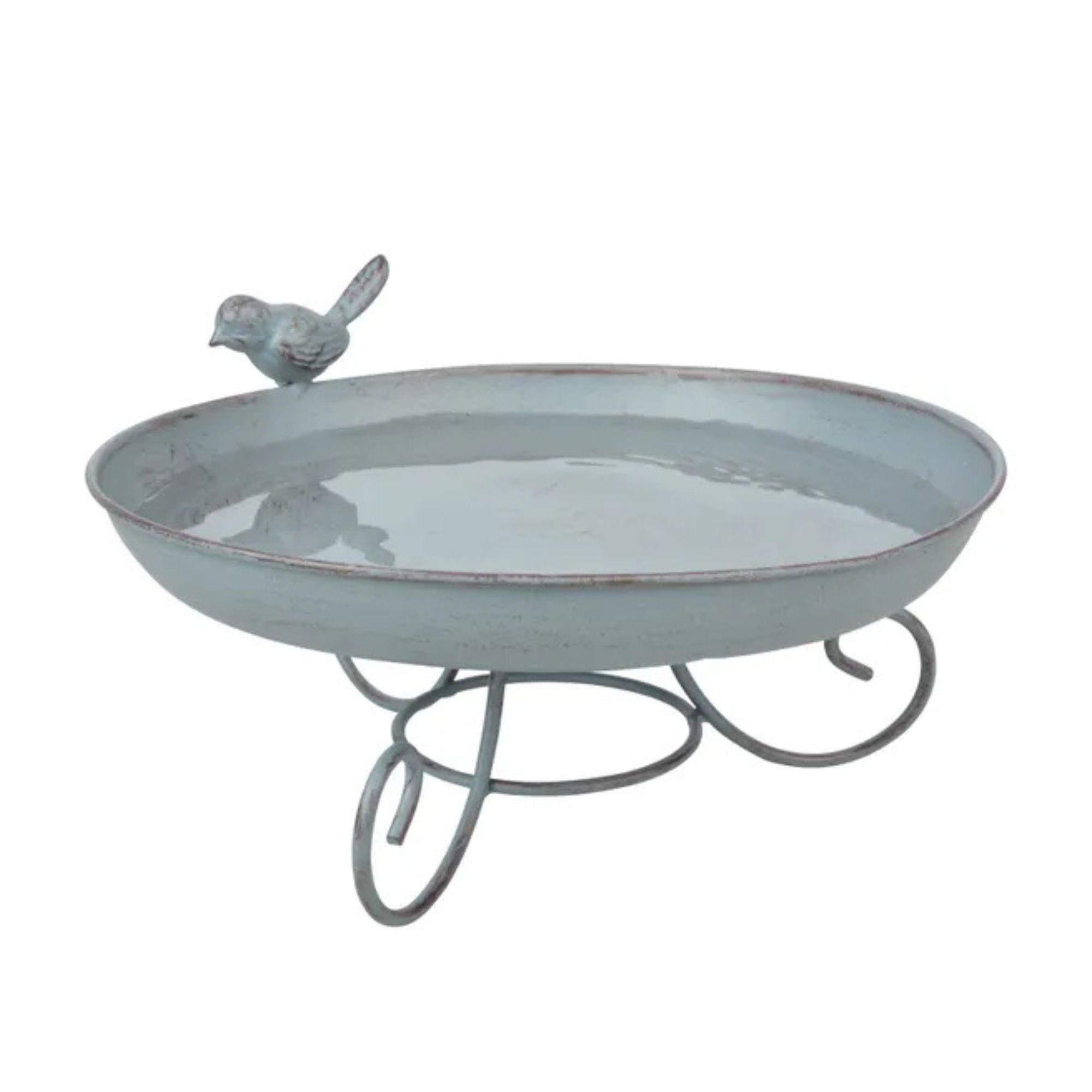Bird bath winter care - 6 expert-approved tips to prevent freezing and keep it clean
Give your bird bath some TLC this winter


A beautiful red robin or singing sparrow can brighten the gloomiest winter days. But as the days get colder and food and water sources become scarce, they won’t return if you don’t follow through with your bird bath winter care.
Birds are an essential part of our ecosystem and should be protected at all costs, but it’s safe to say that there are perks to encouraging birds in your garden. A wildlife garden can boost your property value, and you can even attract birds that eat slugs to protect your crops and blooms. And while birds often use bird baths in UK gardens, winter is a tough time for them.
As Sean McMenemy, nature expert and founder of Ark Wildlife, explains, ‘Birds may not need as much water as in summer, but they still need a reliable source to drink from – and to keep their feathers clean and fluffy!’ So, follow this bird bath winter care guide to keep your feathered friends happy over the colder months.
1. Consider the material

Bird baths come in many different shapes and forms, from ceramic floor bowls to stone podiums and even metal sculptures that double as bird baths. While all of these options can work wonders during the warmer months of the year, some struggle when the temperature drops.
As Sean explains, ‘Ceramic bird baths can be beautiful, but they’re not always up for the winter challenge! They can crack in the cold, so it's best to swap them out for something more frost-resistant, like a sturdy plastic or metal dish.’
So, head out into the garden and double-check the material of your bird bath before the temperature really drops to ensure your bird bath will survive the winter.
2. Prevent the water from freezing

Ice can be a huge issue in winter, and you may spend a lot of time removing ice from your driveway. But, ideally, you don’t want to be in a position where you have to do the same for your bird bath. That’s why prevention is always better than the cure.
Sign up to our newsletter for style inspiration, real homes, project and garden advice and shopping know-how
A small object that moves around in the wind will keep the water moving and stop it from freezing. Susan Morgan, CEO SongBird Survival says, ‘As winter sets in, it's essential to ensure your bird bath remains a welcoming oasis for your feathered visitors. To prevent water from freezing, place a small, wobbly rock (or even a ping pong ball!) in the water bath, which helps keep the water moving. Regularly check and refill the water to maintain a fresh supply.’
And you should definitely avoid common de-icers like boiling water and salt. Chris Bonnett, founder of GardeningExpress warns, ‘Adding boiling water to a cold bird bath will cause a dramatic change in temperature and could easily cause the bird bath to shatter. Salts can also stop water from freezing by lowering the freezing point but in this instance you’ll want to stay away from this solution as they can be harmful to birds and make them sick.’
3. Move it to a better location

Another way to prevent your bird bath from freezing is to move your bird bath to a better location. This is especially true if you have a north-facing garden, which is generally much colder and darker than south-facing gardens.
‘When picking the location for your bird bath, try placing it in an area of your garden that receives some sunlight,’ says Chris. ‘Even when the temperatures are low, the natural warmth from the sun should help prevent the water from freezing in the day.’ Just remember that algae thrive in direct sunlight, so dappled sunlight is best to avoid algae build-up.
Of course, you may need to continually move it throughout the winter as the days get shorter and those who don’t get any sun at all (despite trying) might have to bite the bullet and invest in a bird bath heater instead.
4. Deal with ice as soon as possible

While you can take precautions to stop a bird bath from freezing in winter, there’s no way to control the weather. So, if you do find that your bird bath has frozen over, you should aim to deal with the ice as soon as possible.
Sean says, ‘If it does freeze, just gently break the ice or add some fresh water, and your feathered friends will flock to their chilly watering hole in no time.’
Again, avoid any de-icers, chemicals, or anything other than water, as you don’t want to harm the birds.
5. Keep the surface dark

There are many hacks to stop your bird bath from getting too cold in winter, and one of them is similar to painting your radiator black to slash your energy bills. After all, the colour black is known for its ability to both absorb and retain heat.
And if you want to nail your bird bath winter care, Chris suggests, ‘Try to opt for a bird bath with a dark surface at the bottom to absorb the heat from the sun and keep the water slightly warmer. If your bird bath does not have a dark surface you can always create one by adding some dark rocks to the bottom of it or a dark coloured surface liner.’
If you use a liner, ensure that you secure it to the surface so it doesn’t blow around in the wind or get caught up in a bird’s feathers.
6. Clean it regularly

You should clean a bird bath throughout the year, but it’s especially important during winter when debris falls from the trees and grime can build up on the surface of the water. After all, this can have devastating consequences.
As Susan explains, ‘Cleaning your bird bath every week is really important to make sure the water is clean and to prevent any disease from spreading, ensuring a safe and healthy environment for the songbirds.’
But it’s essential that you know how to clean a bird bath properly to avoid contaminating the water or causing damage to the bird bath itself. Simon Wilkinson, who runs Wilkinsons Landscapes, warns, ‘Do not use chemicals like bleach or limescale remover; even a very small amount can be toxic for little birds. A jet wash or even just a sponge and warm water will do the job. And, of course, regularly change the water to prevent algae growing.’
FAQs
Do pennies keep a bird bath clean?
Dropping a penny into a bird bath can keep a bird bath clean, as the copper in the coin is a natural algaecide that will kill any algae present while also stopping it from growing in the first place.
If you want to do this, aim to use a penny that is pre-1982 as it contains more copper than modern coins, which are primarily made from zinc nowadays.
However, it’s essential to clean the penny before doing this, as you don’t want to run the risk of contaminating the water with bacteria from the coin. It’s also worth noting that using a penny to keep a bird bath clean shouldn’t be used as a replacement for actual cleaning.
How to keep a birdbath from turning green?
The best way to stop a bird bath from turning green is to maintain a regular cleaning schedule. If you keep on top of cleaning, it will limit algae growth and keep the water (and the bird bath itself) clean and clear.
Green algae also grows best in direct sunlight, so placing your bird bath in a location that offers both sunlight and shade throughout the day can stop it from turning green while also stopping it from freezing over in the winter months.
Follow this bird bath winter care guide, and we have no doubt that your feathered friends will thank you for it!

Lauren Bradbury has been the Content Editor for the House Manual section since January 2025 but worked with the team as a freelancer for a year and a half before that. She graduated with a Bachelor’s degree in English and Creative Writing from the University of Chichester in 2016. Then, she dipped her toe into the world of content writing, primarily focusing on home content. After years of agency work, she decided to take the plunge and become a full-time freelancer for online publications, including Real Homes and Ideal Home, before taking on this permanent role. Now, she spends her days searching for the best decluttering and cleaning hacks and creating handy how-to guides for homeowners and renters alike, as well as testing vacuums as part of her role as the Ideal Home Certified Expert in Training on Vacuums, having spent over 110 hours testing different vacuum models to date!







